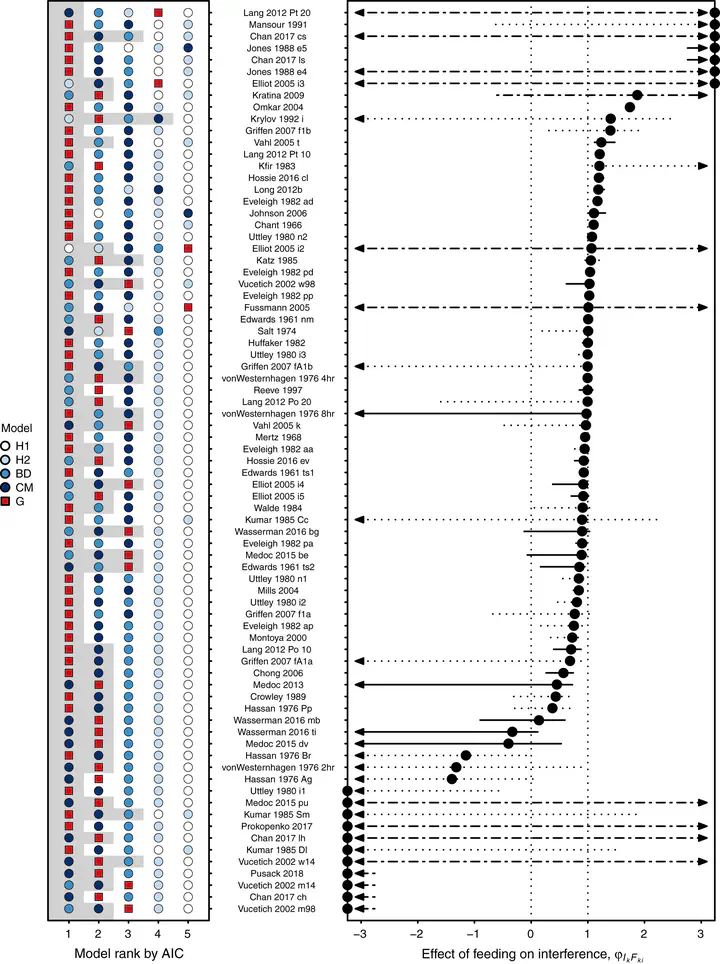
Abstract
Functional responses relate a consumer’s feeding rates to variation in its abiotic and biotic environment, providing insight into consumer behaviour and fitness, and underpinning population and food‐web dynamics. Despite their broad relevance and long‐standing history, we show here that the types of density dependence found in classic resource‐ and consumer‐dependent functional‐response models equate to strong and often untenable assumptions about the independence of processes underlying feeding rates. We first demonstrate mathematically how to quantify non‐independence between feeding and consumer interference and between feeding on multiple resources. We then analyse two large collections of functional‐response data sets to show that non‐independence is pervasive and borne out in previously hidden forms of density dependence. Our results provide a new lens through which to view variation in consumer feeding rates and disentangle the biological underpinnings of species interactions in multi‐species contexts.